Why would I ever swap the engine?
Typically you’ll want to swap the engine because it’s had a catastrophic failure, e.g. a rod has broken and damaged the block (pretty rare without some external issue).
It might also be prudent to replace the engine if you have a component failure on a high mileage engine, for example putting new valves on an engine with over 150,000 miles might just be an expensive band-aid.
The other reason, I see quite a bit, is purely financial especially if you’re paying someone to do the work. To properly disassemble and diagnose an internal issue requires a lot of labor. Sometimes it seems more prudent to just swap the engine rather than spend thousands of dollars on a diagnosis especially when the result might be a new engine anyway.
This week I’m leaning towards a rebuild being a better option, better the devil you know perhaps. However a swap is certainly much easier and requires less determination.

Where to shop for a used engine?
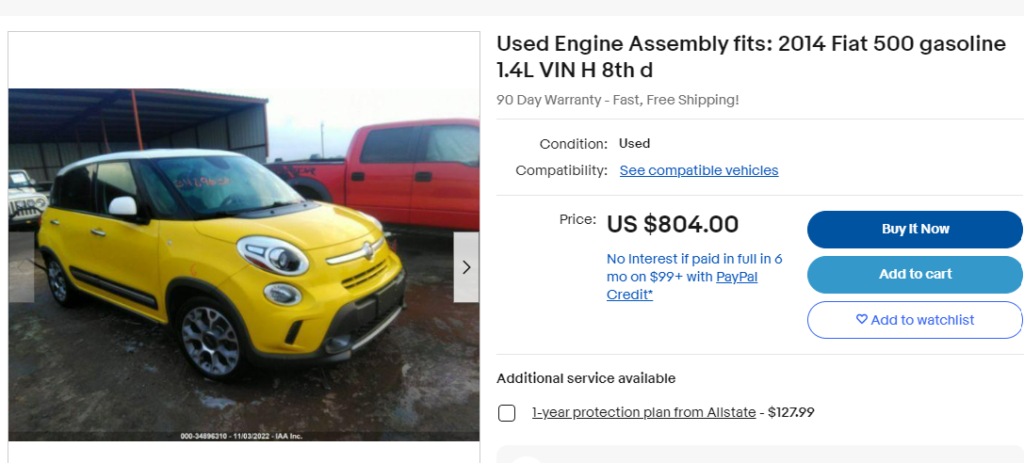
There are several large players that can supply an engine. LKQ and Automotix are probably the most well known and they have good websites that allow you to search the whole country for options.
Your local salvage yards are a good option, but may limit your choices depending on how many Fiats they have.
Personally I’ve had some luck finding engine assemblies on eBay.
What am I shopping for?
Depending on your vehicle you’ll need:
Non-turbo 500 (2012-2017 500 Pop/Lounge/Gucci/Sport)
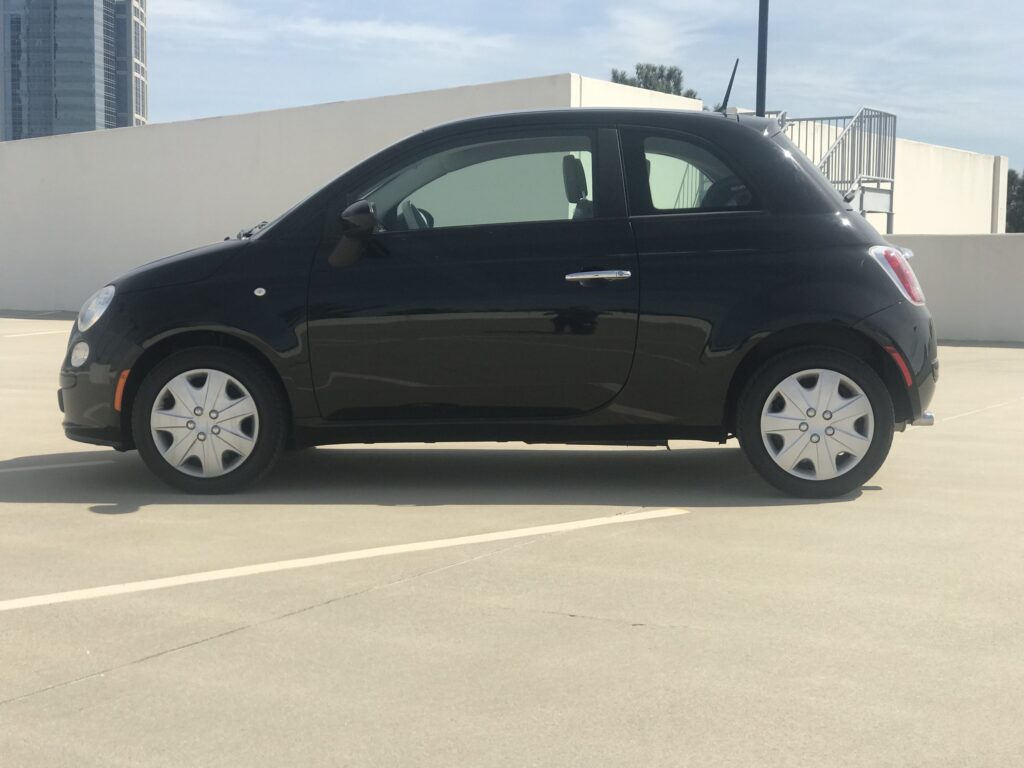
VIN R (8th digit)
This engine was only used in the Fiat 500 in the US which limits the pool of engines available and seems to drive the prices up higher than the more common turbo engines. There also seem to be less low mileage engines available.
The year doesn’t matter too much, just try to find the lowest mileage example in your budget. I would avoid 2012 engine assemblies as the 2012 seems to have more issues with worn main bearings that cause poor oil pressure.
Check any photos for signs that the engine was heavily involved in a collision.
Can you use the VIN H turbo engine in a non-turbo car? Not really. There are a number of differences, some that might not matter (oil pump) and some that probably will cause you issues (cam). There are a lot of minor differences that might have you frustrated and spending time and money to resolve.
Turbo 500 (500 Abarth/GQ/Turbo 2012-2017, 2018-2019 All 500s, 500L all years, 500X 2015-2018)
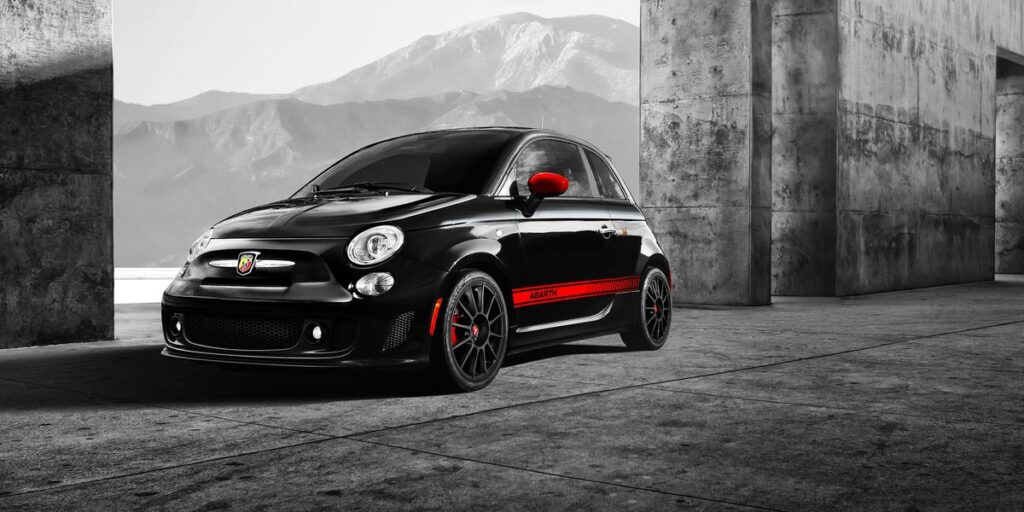
VIN H (8th digit)
This engine was much more widely used, including all the Fiat models listed above and also the Dodge Dart and Jeep Renegade up to 2018.
Again look for mileage and take a good look at any photos. You’re trying to ascertain from the photos if the engine was damaged in any collision.
Turbo 124 Spider
VIN K (8th digit)
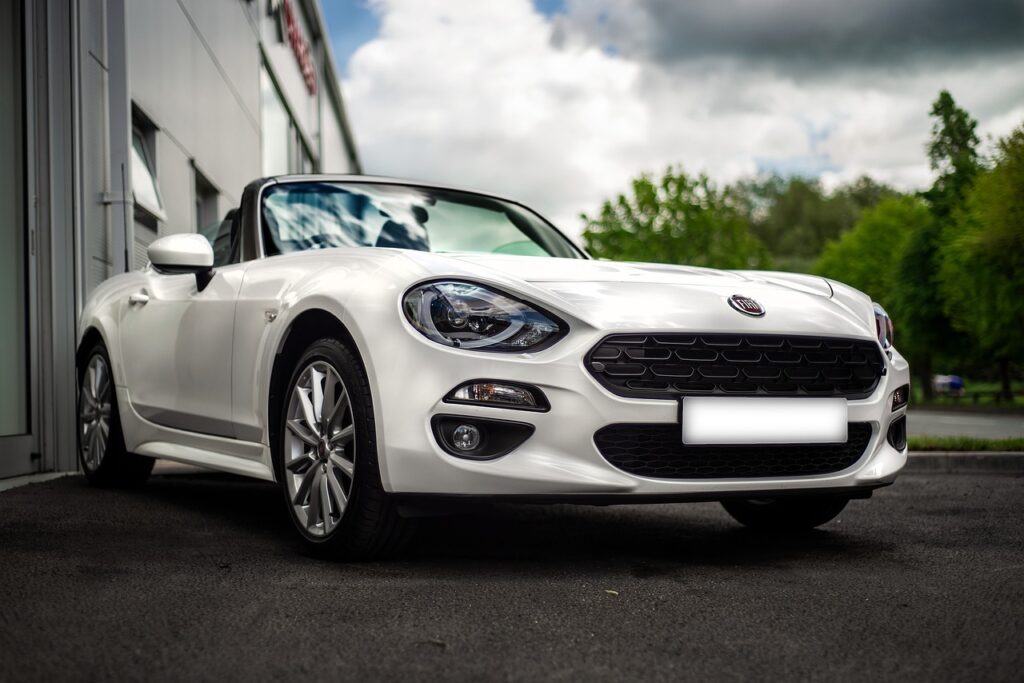
The oddball of the group, not many in the US but also not much demand (yet) so prices are very reasonable.
This engine is not compatible with the transverse mounted VIN H engines. Although a lot of components are common the different mounting orientation means the block cast and oiling solutions are different and will lead to misery if ignored.
What will I receive with my new engine?
It will vary depending on where the engine is sourced. Typically an engine assembly, or long block, will include everything between the valve cover and oil pan. Sometimes you get lucky and receive some extra parts (because they are just too much trouble to remove). That includes things like the wiring harness and sensors, intake manifold. Usually anything that has its own value (alternator, starters, turbos etc) will be removed for sale. Often things like wiring and hoses are cut to expedite removing the engine from the donor car.
Whatever you receive you’ll need to assess and make sure it matches your car’s configuration and whether it is complete or if it needs changing out.

How long is this going to take?
It’s usually between 17hrs and 25hrs of professional labor, depending on which engine and how much needs to be moved over to the new block. For example swapping a 2013 500 Abarth engine with another 2013 500 Abarth engine is going to be more straightforward than swapping in a 2014 500L engine, because the configurations are much closer and anything on the donor engine can be reused without additional work.
I’d assume your car is going to be in the shop for at least a week, and if you are doing this yourself you should expect at least 2 (if not 3) weekends of hard work. It takes me much longer because I’m slow and I tend to work in 3-4 hour slots with lots of breaks and coffee drinking.
This also assumes that there are no surprises. In my experience things break, bolts get stuck, parts get delayed, people get sick etc etc.
Are there other things I should consider doing at the same time?
You’re already spending more money than perhaps you want to, but there are a couple of other items you should think about while things are accessible. These are by no means required and if you are on a tight budget, or just want to get the car moving again, then that is totally understandable.
Clutch (for manual transmissions) and rear main seal.
These are some of the biggest maintenance costs because the labor to remove the transmission is high. If you have more than 50k miles on your clutch I’d recommend replacing everything related to the clutch while it’s accessible.
Timing belt and water pump.
Often it’s a condition of the used engine warranty, but in any case it’s much easier to change the timing belt while the engine isn’t in the car.
Accessory belt and tensioner.
Again it’s not that hard to change these in the future but they can get damaged while sitting in the salvage yard or during shipping or can just sit in the sun and frost which they don’t like.
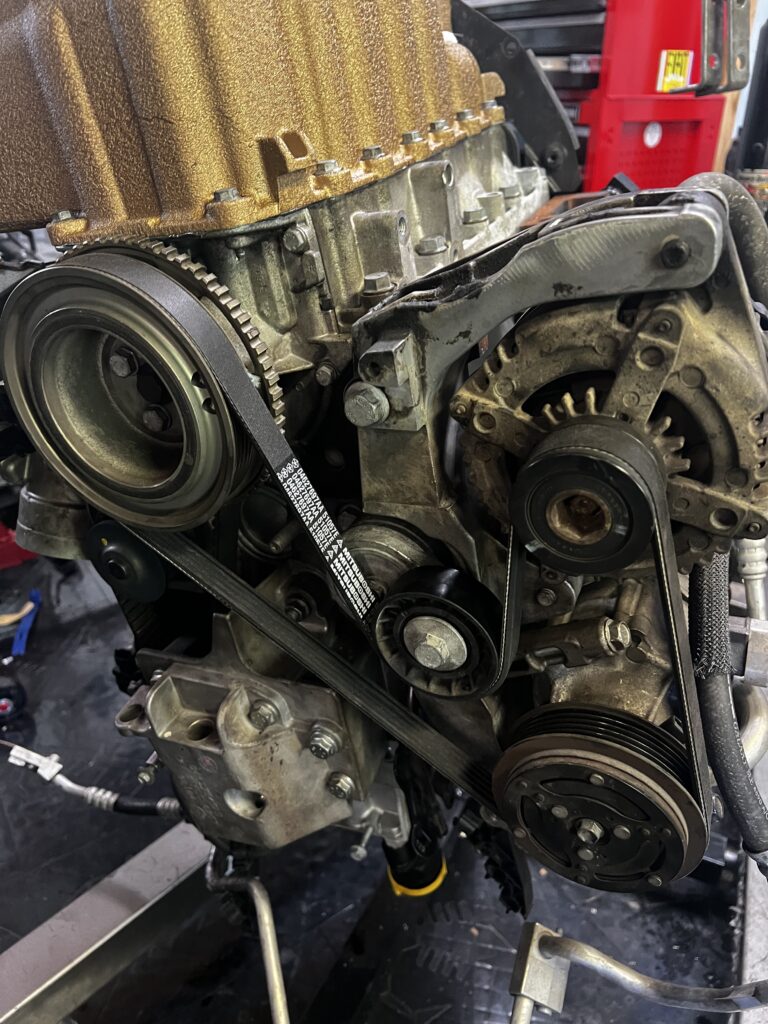
Coolant hoses.
Perhaps, perhaps not. Typically they should be changed every 10 years, but take a look and see how they look.
Heater hoses.
They are hard to get off on the 500s as they are behind the engine and under the vacuum pump, so perhaps take a look and see if you want to put fresh ones in while they are easy to access.
What tools do I need?
There aren’t many specialist tools required. A good set of automotive tools will normally cover you, including sockets and wrenches between 7mm and 19mm, Torx bits, eTorx on some models (500L for example).
You’ll need a 32mm thin walled, deep socket to remove the axle nuts on the 500s. As well as something to separate the ball joints (ball joint separator or a good pry bar depending on your preference).
You’ll need something to remove the O2 sensors, I’ve always used a 22mm wrench but apparently there are more appropriate tools for that too.
Torque wrenches (I use three in ¼”, ⅜”s and ½” to cover the range of required torques).
There are specialized tools for correctly changing the timing belt, but those can be obtaining cheaply on eBay/Amazon etc.
An engine hoist with a leveler is extremely useful, and an engine stand makes doing the accessory transplants much easier.
A spare 10mm socket for when that wanders off perhaps?
I find the most useful tool is a sucker, sorry I mean friend, who will do this with you. Helps you avoid missing important steps and just makes the whole process much more enjoyable.

I have a new engine; so how do I do this?
This article is too short to get into all of the steps and model variations, but the basic principle is to:
1) Remove your old engine.
2) Strip everything off your old engine, making careful note of where things go.
3) Apply all of that to your new engine to make it look exactly like your old engine.
4) Install the new engine back.
5) Make sure it’s got oil and coolant and then see if it works.
Easy peasy!!!
I would highly recommend either finding someone who has done it before to help and/or investing in a subscription to a service manual. That will save you time in figuring out what comes off and how, and also will give you the correct torque specs for your particular Fiat. I like https://www.alldata.com/diy-us/en but keep in mind I haven’t looked at anything else in five years.
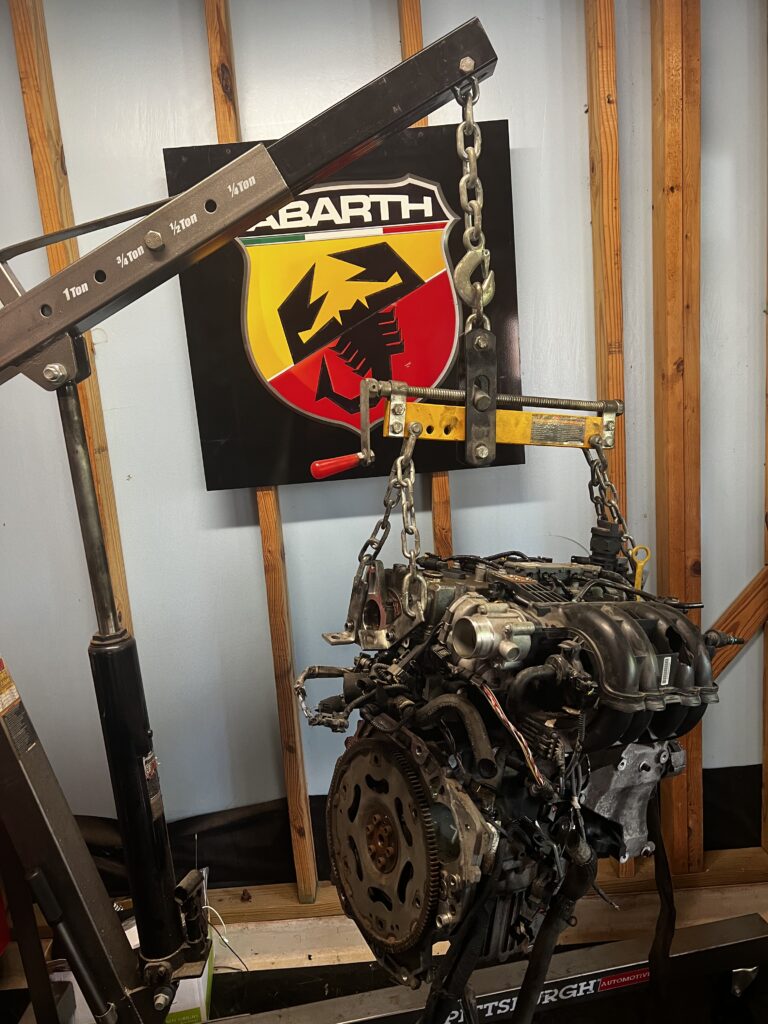
Some common things to look out for during the swap…
One of the most important things to do is inspect the engine as soon as you can. These engines are often from vehicles involved in collisions. So take a good look at the front of the engine, and the engine cooler housing to spot any serious damage. Also check the engine mount and transmission bolts to make sure that no collision stress has cracked the iron block. If you have a warranty with your new engine it’s best to find issues before you’ve wasted 20 hours installing a broken engine.
In terms of more minor things it’s worth mentioning that although the blocks are basically the same there are a lot of variances to account for. These are some of the common ones I’ve seen:
Crank position sensors
FPT relocated the crank position sensor between 2013 and 2014. On the earlier engines it’s located on the back of the oil cooler assembly reading from a toothed wheel on the crank under-pulley. Newer engines will have the sensor on the other side of the engine reading from a reluctance wheel on the end of the crankshaft.
The wiring loom will be different between the two setups, so you may have to move over your old loom and sensor (you can remove the incorrect sensor for your car). Also the under-pulley itself may not match your configuration so be sure to check that out.
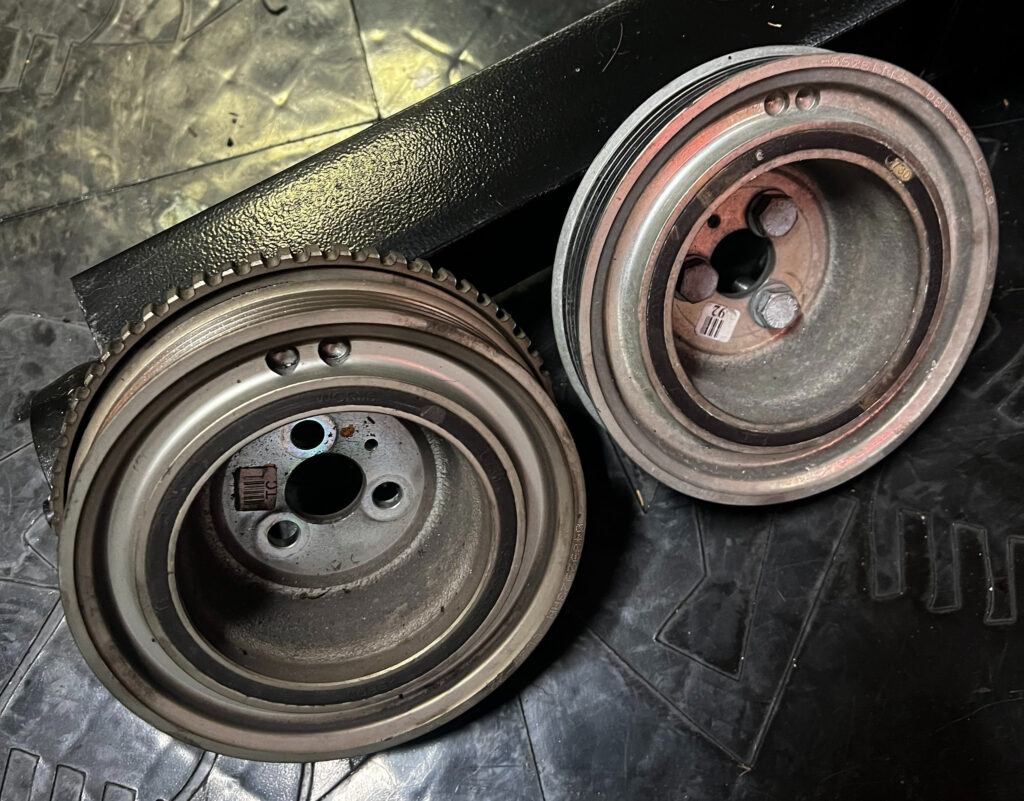
Engine mount brackets
These vary from model to model so make sure you check those out to ensure your engine mounts are in the right place.
Oil pans
There are some minor variations between different oil pans (especially some automatic cars). Make sure you have the right oil pan so things bolt up and be prepared to move your old oil pan over if required (if it’s still in one piece).
Auto versus manual transmissions
The FIRE block will mate up correctly with the C514 and C510 transmissions, but most of the other transverse mounted transmission options use an adapter plate to connect the two. This means you need to make sure you have the correct connection options (i.e. adapter plate) moved over to the new block
AOS
There is a lot of variance in the Air/Oil separator boxes and how they mount up. So this is a good time to take a good look at the valve covers and make sure everything is in the right place.
Some Tips and Tricks

You can do this!
This is just Lego for grown ups so we wish you all the luck in the world and hope your Fiat is running again soon. If you need more help or know something we left out, drop a comment below. We’re always here to make suggestions or at least commiserate with you.
If you found this guide helpful, share it with fellow Fiat enthusiasts, and don’t miss out on more expert insights by subscribing to our blog.

This is absolutely genius! I can’t thank you enough.